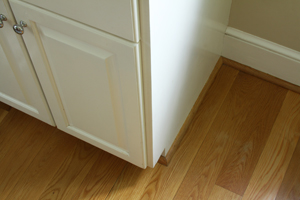
This woodworker is using strong bases to change the color of some Central American hardwoods (for flooring). Does anyone else do that and are there issues he should be aware of?
Michael Dresdner: A 35% lye solution has long been used to darken cherry, and strong bases will also work on other woods, as you’ve no doubt discovered. There are three issues to concern yourself with. First, base or lye reactions tend to be inconsistent, especially across woods from more than one tree. The good news is that it will be obvious immediately. Second, be certain you neutralize the surface with either a mild acid or lots of plain water, before you apply the finish. Some finishes will break down in the presence of alkalines. (Shellac breaks down in alkalines, oil-based coatings saponify, and acid catalyzed coatings refuse to kick over.) Finally, be aware that strong bases are highly caustic. Wear protective gear – gloves, goggles, vinyl apron ? and make darn sure you don’t get it on your skin. Acids will “burn” and hurt immediately, but strong bases eat flesh and nerve endings, so they often do their damage without giving you pain as an immediate feedback warning. This can be VERY dangerous. And of course, keep the ingredients out of reach of children – or for that matter, anyone not trained in handling dangerous or reactive chemicals.
Ian Kirby: People bleach wood, put caustic soda on it and get up to all manner of chemical contortions. If you must do it-have at it. When you’ve changed nature to your liking, you must neutralize the chemical or it will go on ‘chemicaling.’ Completely wash off all traces of it a put the finish on.





